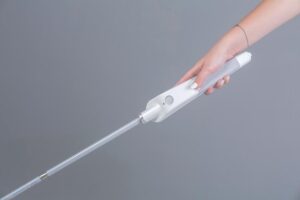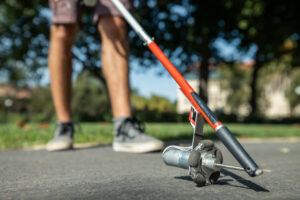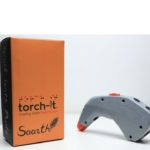Inspired by self-driving vehicles and robotics, the Augmented Cane developed by Stanford University researchers uses a LiDAR sensor to measure distance to nearby obstacles and then provide directions so users can navigate around those areas. Additional sensors in the research prototype include GPS, accelerometers, magnetometers and gyroscopes to monitor the user’s position, speed, direction and more.
Developed by the Malaysian company BAWACANE (S) SDN BHD, the BAWA Cane clip on adapter for white canes or walking sticks turns the mechanical device into an electronically enhanced Internet of Things (IoT) connected detection system. Its dual sensors detect large obstacles such as steps, drops and overhead objects as well as small objects like a tennis ball. With its resolution of ±1 cm, detection range up to 4.5m and sensor angular coverage of 45°, the BAWA Cane can detect obstacles up to 1.2 meters (≈ 4 foot) above the waist and 1.2 meters (≈ 4 foot) in front of the user. Connected to the user’s smartphone, it can provide additional support for the user or information for concerned associates.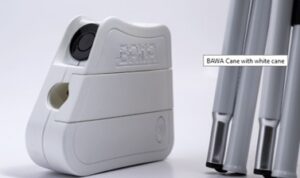
Unlike smart canes intended for the blind and vision impaired, the SmartCane system developed by UCLA researchers is intended as an assistive device to prevent or detect falls in older individuals. Providing biomechanical support, the normal walking cane is used as assistive devices by over 4 million individuals in the United States. Sensors on the SmartCane system include a 3-axis accelerometer, three single-axis gyroscopes, and two pressure sensors.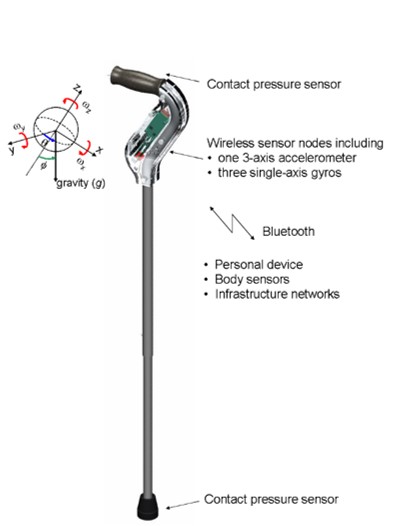
A final smart cane designed for the blind, WeWALK launched its smart cane with an upwards-facing ultrasonic sensor in 2019. Recently, the company partnered with Moovit, whose urban mobility app serve overs one billion users in more than 3,400 cities across 112 countries. With the smart cane existing voice assistance capabilities, Moovit’s Transit API allows users to:
- Identify and navigate to bus stops more easily
- Access real-time arrival information for a bus or train
- Get Live Directions for accessible step-by-step guidance including multimodal routes
- Receive audio and text Get Off Alerts
- Obtain Service Alerts to avoid disruptions and proactively plan a journey
